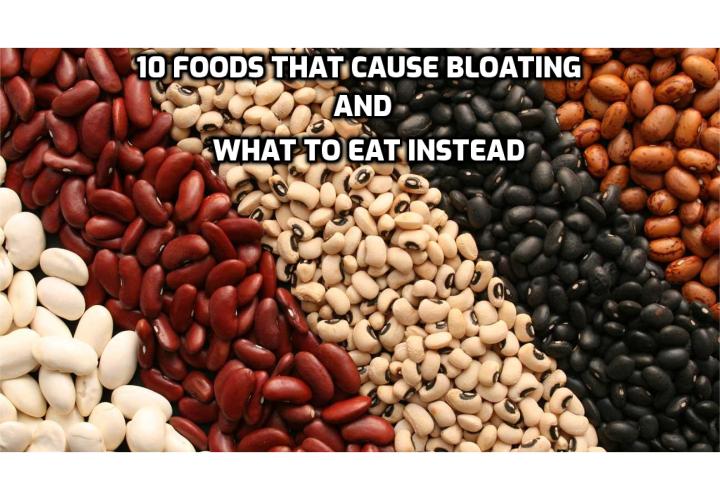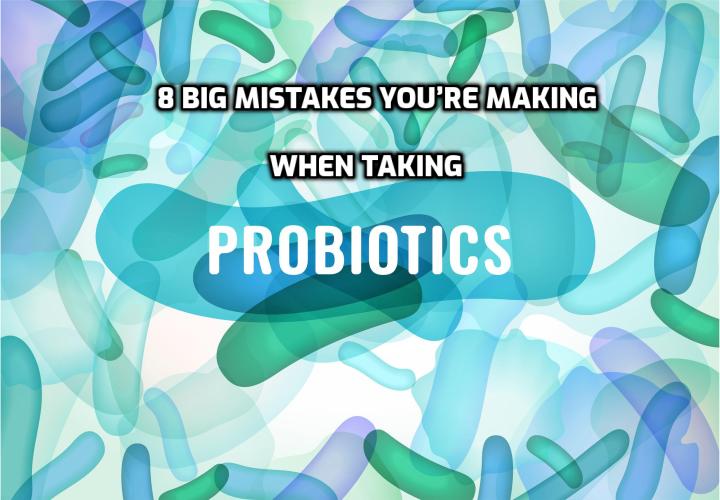Click HERE to Discover these 80 Keto-Friendly and Healthy Slow Cooker Recipes
The Wrong Probiotics Could Lead to These 6 Gut Problems
Research says that probiotics are good for gut health and immunity, but taking the wrong strain might actually make things worse. Here’s how.
Before you assume that all probiotics are good for you, keep in mind that the strain you’re taking plays a huge role in how it affects your body. In fact, taking the wrong strain could lead to a host of unpleasant symptoms and side effects.
Save yourself some time and (literally) headaches with this helpful guide to probiotics. We’ll help you read labels to find the probiotic strains that target your specific symptoms, and what to avoid that might only make you feel worse.
The Basics of Probiotic Strains
From the moment you’re born, your gut starts a process called colonization. You encounter bacteria, first from your mother and the environment around you, and then from food sources and ongoing lifestyle exposures.
The human gut contains more than 100 trillion bacteria. For reference, the human body only contains 30 trillion cells. That means we carry around significantly more bacteria than we do the cells that comprise us!
Most types of bacteria found in the human gut are friendly and beneficial. They can support immunity, make vitamins in the large intestine, and create short-chain fatty acids from the fiber that you eat.
Since bacteria can’t live forever, the good strains need to be replaced regularly by eating fermented foods or by taking probiotic supplements. Otherwise, the bad bacteria in the gut will grow, leading to health problems.
At the same time, taking too much good bacteria – or getting the wrong types of strains for what your microbiome needs – can also result in negative side effects.
There are three major types of probiotic strains found in supplements:
Bacteria-based probiotics: common strains starting with Lactobacillus or bifidobacteria
Yeast-based probiotics: like Saccharomyces boulardii
Soil-based probiotics: common strains include bacillus coagulans (and other bacillus strains), enterococcus faecium, and clostridium butyricum
If you’re new to probiotics, start with a small dose and work your way up. This should cut back on unpleasant reactions to introducing so much good bacteria to the gut at one time.
However, if you’ve already started a new probiotic and are facing the following problems, your strain could be to blame. Here are the most common side effects of taking the wrong probiotic, and which kinds you should take instead.
6 Gut Problems That Your Probiotics Could Be Causing
The probiotic type that’s best for you depends on the kind of symptoms you’ve experienced lately. For example, if you’re experiencing gas, you might want to try a soil-based probiotic.
If you’re taking probiotics and experiencing any of the following symptoms, perhaps it’s time for a strain change.
1. Gas
Taking probiotics can often lead to increased flatulence. This is typically caused by bacterial strains of probiotics, like lactobacillus and bifidobacterium.
Strains to take instead: Skip the common broad-spectrum products and find a product specifically formulated to minimize gas. Soil-based strains like bacillus coagulans are gentler, optimize digestion of nutrients, and lead to fewer symptoms.
2. Bloating
Bloating is another common side effect of probiotic supplements. Its severity can depend on several factors like diet, intestinal health, and the actual strains of probiotic you’re taking.
For most, bloating is a temporary side effect of probiotics and usually resolves within one to two weeks. However, when the bloating is extreme and lasts a long time, it can be a sign that bacteria from the probiotics are getting trapped in the small intestine and not making their way to the large intestine, where they belong. This can also worsen the condition called SIBO, or small intestinal bacterial overgrowth.
Strains to take instead: Try strains like Saccharomyces boulardii, bifidobacterium lactis, lactobacillus acidophilus, and lactobacillus plantarum to reduce bloating.
3. Constipation
While people take probiotics to relieve constipation, sometimes it can make the problem worse. Certain types of yeast-based probiotics are often behind this problem, like Saccharomyces boulardii and others in the same species.
Strains to take instead: Bifidobacteria and lactobacillus strains of probiotics are could help. Try the common bifidobacterium bifidum and lactobacillus rhamnosus to help get things moving again.
4. Allergies
Certain allergies are often caused by excess histamines, which are responding to something that isn’t a real threat. As a result, you can experience unpleasant symptoms like excess mucus, sneezing, itching, watery eyes, and even asthma or trouble breathing.
Histamines that come from the digestive tract are mitigated by DAO, an enzyme that breaks it down. Some people lack this enzyme, making chronic histamine flare-ups a problem, and certain probiotics could add to the problem. Bacterial strains in particular can increase the production of histamine throughout the digestive tract.
Strains to take instead: Avoid strains associated with histamine production, like L. buchneri, L. helveticus, L. hilgardii, and S. theromphilus.
Instead, look for L. reuteri and L. casei, which can reduce allergies from histamine overreaction.
5. Brain Fog
Probiotics can also make you feel a bit fuzzy. Research associates brain fog with high levels of probiotic bacteria strains in the small intestine, where they should not reside.
Lactobacillus bacteria are the strain commonly associated with increasing levels of lactic acid, which could worsen this small intestinal bloating and SIBO.
If you feel fatigued or just can’t seem to concentrate, it’s time to evaluate the probiotic strains you’re taking.
Strains to take instead: Avoid the lactobacillus species and grab soil-based or yeast-based probiotics like bacillus coagulans or saccharomyces boulardii.
6. IBS
Irritable bowel syndrome, or IBS, can stem from a number of causes. It can be worsened by certain foods or beverages, stress, activity levels, and even certain probiotic supplements.
Strains to take instead: Avoid lactobacillus species, which are more problematic for IBS. Instead, look for supplements with bacillus coagulans and B. infantis.
Watch this video – Probiotics Side Effects
The Bottom Line
We need good bacteria in our microbiome in order to be healthy. However, the type of strains you take matters, and all strains are not good for everyone.
While most people who take probiotics and experience bloating or gas will naturally adjust within a week or two, some side effects will only worsen. If you think your probiotic is to blame, see if swapping your probiotic for a different type will help.
Written by Aimee McNew
Author Bio:
Aimee McNew is a Certified Nutritionist who specializes in women’s health, thyroid problems, infertility, and digestive wellness. She ate her way back to health using a Paleo diet, lost 80 pounds, and had a healthy baby after numerous miscarriages. She focuses on simple nutrition practices that promote long-lasting results.
A lot of people have gotten results from the Keto diet, and enjoyed the foods that it has to offer. However, many of the people who are following this diet have a hard time finding the recipes that they need, especially ones that are quick and easy to complete.
Fortunately, Kelsey Ale, noticed this problem, and decided to do something about it. She’s found that making recipes in a slow cooker gives you meals which are not only delicious, but also take very little time to make. Mostly you just put a few simple ingredients in the slow cooker, and let it do the rest.
To find out more, click on – Keto Slow Cooker Cookbook






